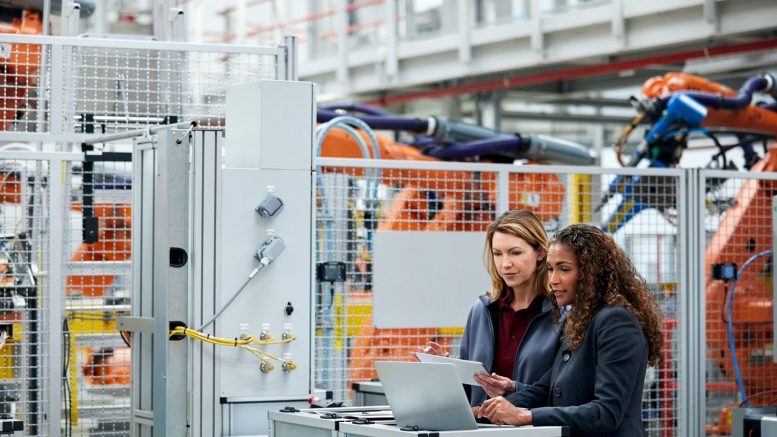Manufacturing plays a pivotal role in South Carolina’s economy, contributing significantly to both job creation and economic growth. This is a diverse industry, encompassing automotive, aerospace, machinery, textiles, and more. The broad range of manufacturing commerce underscores South Carolina’s position as a crucial hub for industrial production in the Southeast.
In the dynamic landscape of modern manufacturing, the ability to effectively communicate across generations is not just a nicety—it’s a necessity. With five distinct generations now sharing the workplace, the manufacturing sector stands at a critical juncture where bridging generational divides can drive both innovation as well as operational efficiency. Understanding and leveraging intergenerational communication can significantly enhance workplace cohesion and productivity, setting a powerful precedent for the industry as a whole.
The Generational Mix in Manufacturing
Today’s manufacturing floor is a microcosm of a diverse workforce, with Baby Boomers, Generation X, Millennials, Generation Z, and even the emerging Generation Alpha contributing to its vibrancy. Each of these groups brings unique perspectives and strengths shaped by their distinct life experiences and technological environments. For instance, Baby Boomers often possess extensive industry knowledge and a deep commitment to the craft, while Millennials and Gen Z are typically more technologically adept and innovation-driven. The challenge (and the opportunity) lies in harnessing these varied skills and perspectives through effective communication.
Understanding Generational Communication Preferences
Understanding the distinct preferences and styles of each generation is critical in fostering effective intergenerational communication. For example, Baby Boomers may prefer face-to-face meetings and formal communication, valuing clarity and directness. In contrast, Millennials and Gen Z often favor digital communication platforms, such as internal channels (think: Slack) and collaborative online tools, and might appreciate a more informal and iterative approach.
Data shows that when communication preferences are not aligned, misunderstandings and inefficiencies can arise. For instance, while a Baby Boomer might want to collaborate by scheduling a meeting, a Millennial might find it inefficient and prefer a quick back-and-forth over Slack. Recognizing these preferences is the first step in creating a harmonious working environment.
Addressing Communication Challenges
Manufacturing environments often exacerbate generational communication challenges due to their varied settings. The contrast between the professional experiences of office workers and those on the assembly line can further highlight these differences. Office staff might rely heavily on digital tools and formal reports, while assembly line workers might prioritize straightforward, practical instructions and hands-on interactions. Bridging the gap between not just generations, but communicative skill sets, is crucial.
For example, the engineering team must collaborate with floor workers to implement a new assembly procedure. If the engineers communicate through detailed emails and technical jargon, the floor workers might find the information inaccessible or confusing. Conversely, if the communication is too simplistic or lacks technical detail, the engineers might miss critical insights from the floor workers’ practical experience. The accommodation of each team requires deliberate effort and tailored communication strategies that respect and integrate the needs and preferences of both groups.
Creating Unity Through Solutions
In order to clear these communication hurdles, the manufacturing industry must invest in intergenerational communication training and tools. Workshops and conferences focused on generational diversity such as the upcoming Internal Diversity, Equity, and Inclusion Conference at Milliken, are invaluable for fostering understanding and collaboration. These forums provide opportunities to explore data on generational communication preferences, identify triggers of poor communication, and develop practical solutions.
The benefits of effective intergenerational communication extend beyond mere operational efficiency. When employees from all generations feel heard and understood, morale improves, and a sense of unity and shared purpose is cultivated. This, in turn, can lead to enhanced innovation and profitability, as diverse perspectives are more likely to spark creative solutions and drive progress.
In the manufacturing industry, where precision and teamwork are paramount, fostering a culture of intergenerational respect and collaboration must rule the day. By prioritizing effective communication and addressing generational differences head-on, manufacturers can build a stronger, more unified workforce capable of tackling the challenges and opportunities of today’s rapidly evolving market.
Kamber Parker Bowden is the founder of The YoPro Know, which promotes success in the workplace by being a bridge between ambitious young professionals and progressive businesses who want to recruit, engage, and retain them. Learn more at www.yoproknow.com.



Be the first to comment on "The Power of Intergenerational Communication: Bridging the Generational Gap and Creating Unity in Manufacturing"